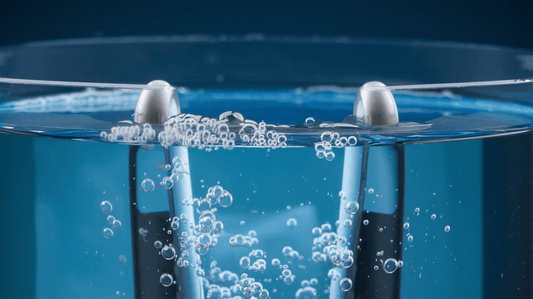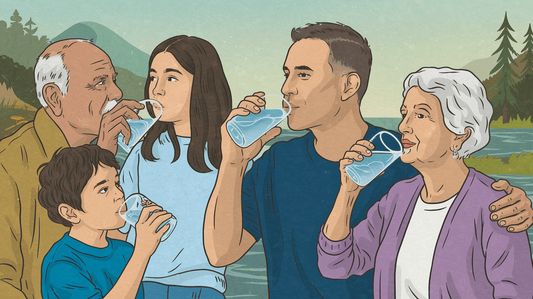Does more water mean more hydrogen in hydrogen-rich water?
Updated
John Smith
Researcher & Writer
Our Commitment to Accuracy and Objectivity
Ocemida is committed to delivering reliable and unbiased information. Our editorial team, comprised of experienced editors and medical experts, meticulously reviews every article and guide to ensure the content is accurate, up-to-date, and free from bias.
Rigorous Fact-Checking Process
To uphold the highest standards of accuracy, we adhere to the following fact-checking guidelines:
Trusted Sources: We only cite reputable sources, such as peer-reviewed journals, government reports, academic and medical associations, and interviews with credentialed healthcare professionals.
Evidence-Based: All claims and data are supported by at least one credible source. Each article includes a comprehensive bibliography with full citations and links to the original sources.
Internal Linking: While we may include internal links to other relevant Ocemida pages for better navigation, these links are never used as primary sources for scientific information.
Expert Review: A member of our medical or scientific expert team provides a final review of the content and cited sources for all articles and product reviews related to medical and health topics.
By following these rigorous standards, Ocemida strives to provide readers with reliable and informative content.
Share with a friend
Hydrogen concentration in water is often measured in parts per billion (ppb). This measurement indicates the number of hydrogen atoms per billion water molecules. However, it's crucial to understand that while ppb is a ratio, the actual quantity of hydrogen atoms can vary depending on the volume of water, even if the concentration remains constant.
Comparing 6000 ppb in Different Water Volumes
Let's examine two scenarios: 6000 ppb of hydrogen in 210 mL of water versus 6000 ppb in 280 mL of water.
Scenario 1: 6000 ppb in 210 mL
Scenario 2: 6000 ppb in 280 mL
At first glance, one might assume that these scenarios are equivalent since the concentration (6000 ppb) is the same. However, the total number of hydrogen atoms differs due to the different water volumes.
Calculations
To illustrate this, let's calculate the actual number of hydrogen atoms in each scenario:
- Calculate the number of water molecules:
- 1 mL of water contains approximately 3.345 x 10^22 molecules
- Scenario 1: 210 mL * 3.345 x 10^22 = 7.0245 x 10^24 molecules
- Scenario 2: 280 mL * 3.345 x 10^22 = 9.366 x 10^24 molecules
- Calculate the number of hydrogen atoms (6000 per billion water molecules):
- Scenario 1: (7.0245 x 10^24 * 6000) / 10^9 = 4.2147 x 10^19 hydrogen atoms
- Scenario 2: (9.366 x 10^24 * 6000) / 10^9 = 5.6196 x 10^19 hydrogen atoms
- Calculate the Total Hydrogen Content in µg:
- Mass of one hydrogen atom: 1.66 x 10^-24 g
- Scenario 1: 4.2147 x 10^19 * 1.66 x 10^-24 = 6.996 x 10^-5 g = 0.06996 µg
- Scenario 2: 5.6196 x 10^19 * 1.66 x 10^-24 = 9.329 x 10^-5 g = 0.09329 µg
Comparison Table
| Scenario | Water Volume (mL) | Concentration (ppb) | Water Molecules | Hydrogen Atoms | Total Hydrogen Content (µg) |
|---|---|---|---|---|---|
| 1 | 210 | 6000 | 7.0245 x 10^24 | 4.2147 x 10^19 | 0.06996 |
| 2 | 280 | 6000 | 9.366 x 10^24 | 5.6196 x 10^19 | 0.09329 |
Conclusion
Let's break this down in simple terms:
Imagine you have two bottles of lemonade. Both have the same concentration of lemon flavor, but one bottle is bigger than the other. The bigger bottle will give you more lemon flavor overall, even though the taste (concentration) is the same in both.
It's the same with hydrogen in water. We looked at two amounts of water:
- A smaller amount: 210 mL (about a cup)
- A larger amount: 280 mL (a bit more than a cup)
Both have the same concentration of hydrogen (6000 ppb), just like our lemonade example. But here's the key point: the larger amount of water (280 mL) actually contains more hydrogen atoms in total.
Why does this matter?
- If you're drinking hydrogen water for health benefits, drinking the larger amount gives you more hydrogen overall.
- For scientists studying hydrogen water, they need to pay attention to both the concentration and the total amount of water to get accurate results.
- If you're comparing hydrogen water products, look at both the concentration and the serving size to know how much hydrogen you're really getting.
Remember, when it comes to hydrogen in water, both the concentration (ppb) and the amount of water are important. More water at the same concentration means more hydrogen overall. So, next time you see hydrogen water, think about both how strong it is (concentration) and how much of it there is (volume) to get the full picture!
Table of Contents












































